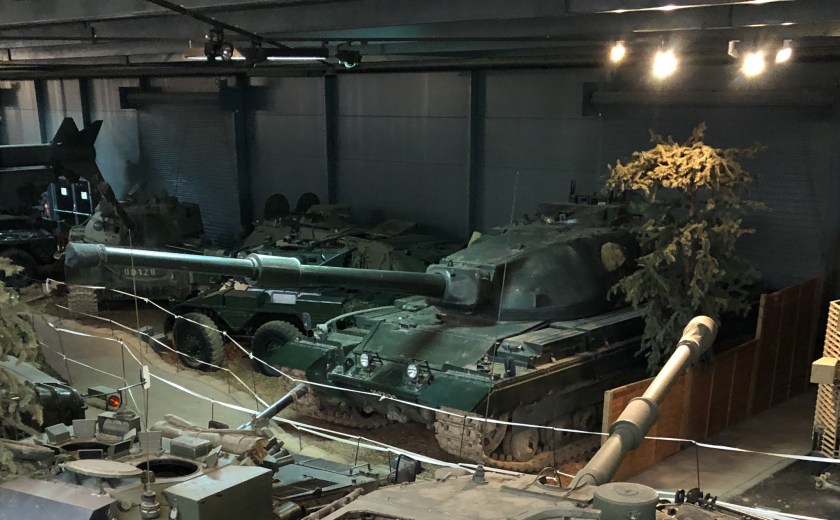This Heavy Gun Tank Conqueror Mark I was on display at The Tank Museum.
The FV 214 Conqueror, also known as Tank, Heavy No. 1, 120 mm Gun, Conqueror was a British heavy tank of the post-World War II era. It was developed as a response to the Soviet IS-3 heavy tank.
The Conqueror’s main armament, an 120 mm gun, which was larger than the 20-pounder gun carried by its peer, the Centurion.
The Conqueror’s role was to provide long range anti-tank support for the Centurion. Nine Conquerors were issued for each regiment in Germany, usually grouped in three tank troops.
Overall 185 Heavy Gun Tank Conquerors were built. The first was produced in 1955.
They were in service until 1966, both the Conqueror and the Centurion were replaced by the Chieftain.
There was a Heavy Gun Tank Conqueror Mark I at the Land Warfare Exhibit at the Imperial War Museum Duxford. I managed to photograph it back when I visited in 2019.
It was in a wider shot of the Land Warfare Exhibit that included an FV433 Abbot SPG, which I have cropped for this post.















